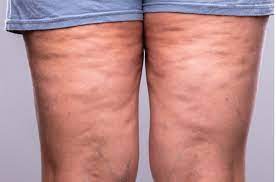
Breaking Myths About Lipedema
Lipedema, a condition often misunderstood and overlooked, affects millions worldwide, predominantly women. Despite its prevalence, myths surrounding lipedema often prevent early diagnosis and effective management. Below, we’ll break down the most common misconceptions about Lipedema with facts that help set the record straight.
Myth 1: Lipedema is Just Obesity
One of the most persistent myths about lipedema is confusing it with obesity. However, lipedema is a chronic condition characterized by the abnormal buildup of fat, typically in the legs and sometimes the arms. Unlike obesity, the fat distribution in lipedema is disproportionate, often sparing areas like the hands and feet.
For example, studies show that 11% of women in Europe show signs of lipedema, emphasizing its prevalence as a separate condition from standard weight issues. While lipedema can coexist with obesity, treating them as the same may lead to misdiagnosis.
Myth 2: Lipedema is Easy to Diagnose
Wrong. Lipedema is notoriously underdiagnosed due to insufficient awareness among both patients and healthcare providers. The fat tissue associated with the condition cannot be reduced through standard diet or exercise, leading some to believe it’s simply stubborn fat. Furthermore, early symptoms like tenderness, bruising, and swelling may be dismissed as minor issues.
Recent awareness efforts show that recognition of lipedema symptoms can significantly increase diagnostic rates, allowing for timely management strategies.
Myth 3: Lipedema Affects Only Overweight People
While it’s common to associate lipedema with body size, the reality is that it can affect individuals of all shapes, regardless of BMI. Thin women can also experience the characteristic symptoms of lipedema, including disproportionate fat in certain areas, pain, and impaired mobility.
Interestingly, research highlights that lipedema’s unique fat composition and symptoms are unrelated to weight gain caused by diet or lifestyle, further setting it apart from more generalized weight issues.
Myth 4: There’s No Treatment for Lipedema
Although there’s no known cure for lipedema, many treatment options exist to help manage the symptoms. These may include compression therapy, manual lymphatic drainage, and surgical options like liposuction. Dispelling this myth encourages those affected to seek medical advice and discuss effective symptom management.
Final Thoughts
Lipedema deserves more recognition, both in medical spaces and public awareness efforts. By debunking these common myths, we pave the way for better understanding, quicker diagnoses, and improved quality of life for those affected. Staying informed is the first step toward breaking the stigma and myths surrounding lipedema, and perhaps the most powerful tool against its challenges.
Proudly powered by WordPress. Theme by Infigo Software.